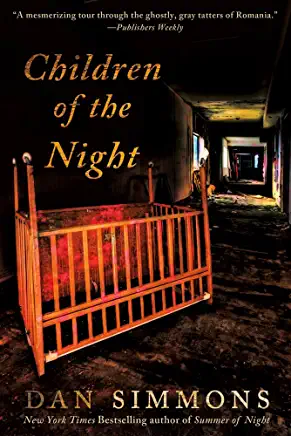Let’s keep going with our vampire and bleeding disorder theme for Halloween!
My friend and colleague Richard Atwood of North Carolina found this novel for us.
Kate Neuman, 38, was raised in Boston and is a Harvard-trained, divorced hematologist at the Centers for Disease Control branch in Boulder, Colorado. Kate’s been a specialist in blood diseases for 15 years and is one of 15 top hematologists in the Western hemisphere!

In May 1991, Kate is sent on a 6-week UNICEF and CDC International Relief Fund mission in Romania to investigate the orphan situation involving 200,000 babies, especially AIDS babies, and the adoption circus of gypsy babies being sold for, and then bought by, American parents. With the help of Father Mike O’Rourke, an American priest with a prosthetic leg, and Lucian Forsea, a Romanian medical student and translator, Kate focuses on Unidentified Juvenile Patient #2613, an abandoned, 7-month-old, nameless boy with an immune system disorder treated with whole blood transfusions.
Kate adopts the boy, names him Joshua, and brings him home to Colorado. Joshua, who responds to regular whole blood transfusions, undergoes MRI and CT exams showing a small appendix or abscess – a shadow organ – in the wall of his stomach that seems to absorb blood. Kate’s investigations show that Joshua has a critical shortage of adenosine deaminase (or ADA deficiency, a genetic failure on chromosome 20) that can be treated with PEG-ADA, a synthetic enzyme.
Kate presents at a CDC meeting her findings that a SCID (severe combined immunodeficiency) child, such as Joshua, can achieve an auto-immunological reconstruction with blood transfusion.
She concludes that this genetic mutation, which she calls the J-virus mutation, is the basis for the vampire myth.
Kate speculates that members of a family would have to ingest blood to survive, and that due to secrecy and inbreeding “the recessive-recessive traits would have been more frequent as a result, much as with the hemophilia which plagued the royal houses of Europe.” Bypassing official approval, Kate injects Joshua with an artificial hemoglobin derived by genetic engineering that is as effective as whole blood.
Then in September, five intruders kidnap Joshua, injure Kate, and kill Tom, their nanny, and an AIDS researcher, plus burn her home and the CDC labs. Once recovered, Kate takes $18,000 in cash to Romania, and enlists the aid of Lucian and O’Rourke to recover her adopted son.
They learn that Joshua is actually the next “Prince of the Voivoda Strigoi,” or the heir apparent to the Father, also called Vlad Tepes, or Dracula. The strigoi disease is similar to the HIV virus, or what Kate calls the J-virus, a retrovirus that binds gp120 glycoprotein to CD4 receptors in T-helper lymphocytes. While desperately traveling around Romania trying to rescue Joshua before the child takes the Sacrament, or drinks human blood, Kate falls in love with O’Rourke, and is captured and then escapes from the strigoi. Then Lucian is killed. Kate arrives at Castle Dracula, or Poienari Citadel, before Joshua drinks human blood and the castle is set to explode. Just in time, Kate rescues Joshua, while O’Rourke steals a helicopter to ensure their safe escape.
Yet the aged Dracula, who injects himself with Kate’s hemoglobin substitute for rejuvenation, escapes as a giant bat to run his biotech firms in America!
This thriller novel delves into a complex medical explanation for a rare blood disease, one that causes vampirism. The vampires are called strigoi. The reference to hemophilia is not needed for the explanation of the J-virus. Kate risks her life, against huge odds, to retrieve her adoptive son, with a dangerous quest through Romania mountains, which adds more violence and excitement, even brief romance, to the novel.
This proves what a hematologist from Colorado can do!
Children of the Night. New York, NY: G.P. Putnam’s Sons. 382 pages. By Dan Simmons, 1992.

